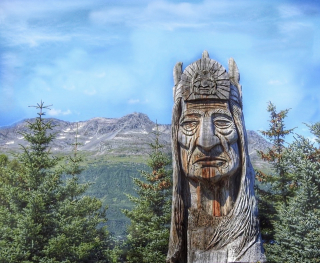 Running past the Sea of Galilee, Via Maris is a Modern Day name for the Early Bronze Age major trade route that connected Egypt to the Lavent.
Running past the Sea of Galilee, Via Maris is a Modern Day name for the Early Bronze Age major trade route that connected Egypt to the Lavent.
This large area in the Eastern Meditterraen Region of Western Asia encompassed present day Syria, Lebanon, Jordan, Palestine, most of Turkey southwest of the Middle Euphrates, and Israel.
The islands from Greece to Crete and Lycenaiea (the eastern coastal region of Libya), were also found along the Via Maris. So was Anatolia.
This included Asia Minor, Turkey, (chiefly from the Gulf of Alexandretta, the easternmost bay of the Meditterraen Sea), to the Black Sea.
Based on Isaiah 9:1, Via Maris translates into "the way of the sea". The Via Maris was also the most important route from Egypt to Syria (the Fertile Crescent). The route followed the coastal plain, then crossed Jezreel and the Judean Valley, in the northern district of Israel. Other frequently used names for Via Maris are International Coastal Highway and International Trunk Road.
Also known as the "Way of the Philistines," the Via Maris originated in El-Qantara, Egypt, northeast of Cairo. The Via Maris progressed east to Pelusium in Egypt's Nile Delta. Various trade routes crossed the Via Maris making traveling to Africa and Asia easier.
The Via Maris followed the northern coast of the Sinai Peninsula, through el-Arish in the northern Sinai, to Rafah in the southern Gaza Strip. Avoiding the Yarkon River in Central Israel and Tel Dor, the route followed the coast of Canaan through Gaza, Ashkelan, the port of Ashdod, and Antipatris.
This city was known for the Battle of Aphek where the Philistines defeated the Israelites and captured the Ark of the Covenant as detailed in 1 Samuel 4:1-10.
From Antipatris, the Via Maris turned east through Megiddo, on the northern end of the Wadi Ara Pass, through the Carmel Ridge, on to the Jezreel Valley and Tiberias on the Sea of Galilee.
Finally, the Via Maris passed through Magdala, on the western bank of the Sea of Galilee. At the time, the most important city in that region. Mary Magdalene was thought to have been born there. Capernaum, and Hazor ( the largest fortified city in Ancient Israel), were other towns on this section of the Via Maris.
Magdala was the location of the Migdal Synagogue, that dated to the Second Temple Period.
This is the oldest temple that has been found in the Sea of Galilee area. Another important relic from the town is the Magdala Stone. The carved stone block is known for its detailed carvings of the Second Temple, as well as images of the seven-branch lamp menorah used in the temple Moses established.
Leaving Magdala, the Via Maris crossed the Jordan River, at what is commonly called Jacob's Ford. This was the site where the Muslim sultan Saladin conquered Jerusalem in 1179AD. The route then climbed sharply over the Gulan Heights northeast into Damascus. At this point, travelers could take the King's Highway to the Euphrates River and Anatolia (Modern Day Turkey).
During the Early Roman, Hellenistic (Greek), and Hasmonean (Judaea) dynasties, flourishing towns and settlements spread around the Sea of Galilee. These included Hippos (a Greco-Roman city on a hill in the northern Jordan Valley that overlooked the sea) and Tiberias on the western shore of the Sea of Galilee. One of Judaism's four Holy Cities along with Safed, Hebron, and Jerusalem.
TOWNS:
EL-Qantara -border town on Suez Canal that connects Africa and Asia
Pelusium - border fortress with flax and beer main crops
Jezreel - large fertile plain where Gideon defeated the Midianites and Amalekites (Judges 6:3)
Rafah - Modern Day sole crossing point between Egypt and Gaza Strip
Tel Dor - Canaanite port city (Joshua 12:23)
Canaan - mainly Southern Lavant region
Ashkelan - oldest and largest seaport in Canaan
Ashdod - Bronze Age tell that exported dyed woolen purple garments
Antipatris - in Central Israel. Many battles fought there between Israelites and Philistines
Megiddo (and its plain) - known as Armageddon (Revelation 16:16). Site considered "the most monumental single edifice unearthed from Early Bronze Age." Considered by some sources to be the site of the final battle before Judgement Day.
Wadi Ara Pass - leads to Megiddo
Carmel Ridge - Mount Carmel. A Neanderthal named Tabun I, regarded as one of the most important human fossils ever found discovered there.
Capernaum - fishing village on north shorevof Sea of Galilee. Multiple biblical references.
Believed to be where Peter came from.
Hazor - commercial ties with Babylon and Syria. (Joshua 11:10 called it "the head of all those kingdoms")
Hippos - border fortress ruled by Seleucids (Syrians). During Maccabees Revolt, Israel was divided into two kingdoms.
Hebron - largest city in West Bank. Home of Hittites between Abraham and Ezra after Babylonian Exile from Anatolia
Safed - Galilee's highest city. Many festivals there
Next Time: Sea of Galilee #5: Jerusalem Talmud.
Author Notes
Whispering Giant in Alaska, by alaskapat, selected to complement my posting.
So, thanks alaskapat, for the use of your picture. It goes so nicely with my posting.
|
|


